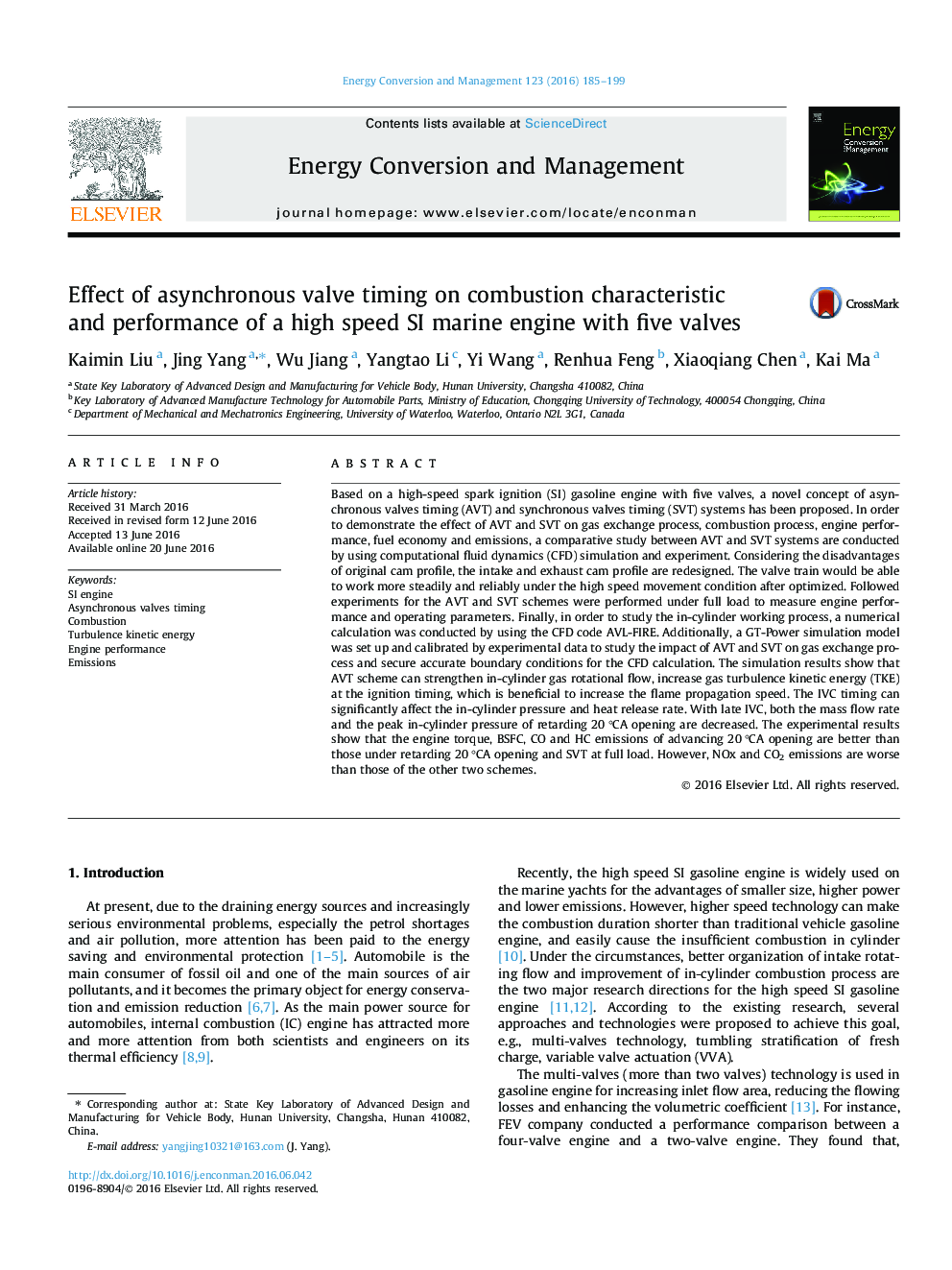| کد مقاله | کد نشریه | سال انتشار | مقاله انگلیسی | نسخه تمام متن |
|---|---|---|---|---|
| 760167 | 1462839 | 2016 | 15 صفحه PDF | دانلود رایگان |
• The asynchronous valves timing and synchronous valves timing systems were proposed.
• The intake and exhaust cam profile were evaluated and redesigned.
• The asynchronous valves timing can enhance in-cylinder tumble ratio and TKE.
• The advancing 20 °CA opening scheme can achieve more positive effects.
Based on a high-speed spark ignition (SI) gasoline engine with five valves, a novel concept of asynchronous valves timing (AVT) and synchronous valves timing (SVT) systems has been proposed. In order to demonstrate the effect of AVT and SVT on gas exchange process, combustion process, engine performance, fuel economy and emissions, a comparative study between AVT and SVT systems are conducted by using computational fluid dynamics (CFD) simulation and experiment. Considering the disadvantages of original cam profile, the intake and exhaust cam profile are redesigned. The valve train would be able to work more steadily and reliably under the high speed movement condition after optimized. Followed experiments for the AVT and SVT schemes were performed under full load to measure engine performance and operating parameters. Finally, in order to study the in-cylinder working process, a numerical calculation was conducted by using the CFD code AVL-FIRE. Additionally, a GT-Power simulation model was set up and calibrated by experimental data to study the impact of AVT and SVT on gas exchange process and secure accurate boundary conditions for the CFD calculation. The simulation results show that AVT scheme can strengthen in-cylinder gas rotational flow, increase gas turbulence kinetic energy (TKE) at the ignition timing, which is beneficial to increase the flame propagation speed. The IVC timing can significantly affect the in-cylinder pressure and heat release rate. With late IVC, both the mass flow rate and the peak in-cylinder pressure of retarding 20 °CA opening are decreased. The experimental results show that the engine torque, BSFC, CO and HC emissions of advancing 20 °CA opening are better than those under retarding 20 °CA opening and SVT at full load. However, NOx and CO2 emissions are worse than those of the other two schemes.
Journal: Energy Conversion and Management - Volume 123, 1 September 2016, Pages 185–199
